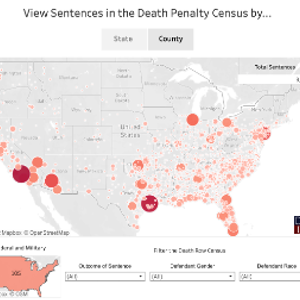

Following the release of a new study published in the Journal of Adolescent Health concerning the failure of deterrence in drug use, medical experts commented that deterrence also fails in the area of capital punishment. “It is very clear that deterrents are not effective in the area of capital punishment,” said Dr. Jonathan Groner, an associate professor of surgery at Ohio State University College of Medicine and Public Health who researches the deterrent effect of capital punishment. “The psychological mind-set of the criminal is such that they are not able to consider consequences at the time of the crime. Most crimes are crimes of passion that are done in situations involving intense excitement or concern. People who commit these crimes are not in a normal state of mind — they do not consider the consequences in a logical way,” Groner observed. Deterrents may work in instances where the punishment is obvious and immediate, neither of which are true for the death penalty.
Experts suggest that criminal behavior and the nation’s murder rate may best be curbed by addressing the environmental and social factors that contribute to violent crime. Groner explains, “The murder rate is most closely associated with the socioeconomic health of the country. The murder rate in the U.S. was highest during the Depression. Also, the majority of people on death row are from the most blighted parts of the U.S. They are very poor and very impoverished. A very high percentage have mental health problems. Good access to health care and improving the socioeconomic health of our country’s cities would reduce the murder rate more effectively than executions.” Dr. Carlyle Chan, a professor of professional development at the Medical College of Wisconsin, adds that many people believe they can cheat the system and get away with their illegal behaviors, which lessens the deterrent impact of a specific punishment.
The youth-study’s author, Dr. Diane Elliot, is a professor of medicine at the Oregon Health and Science University. She examined the deterrent impact of random drug testing in high school athletes.
(ABC News, October 22, 2007). See Deterrence and Studies.


 for End of 'Broken' Death Penalty" />
for End of 'Broken' Death Penalty" />
![]()
An introduction to the navigation system, features, and terminology of DPI's website.
![]()
Information about scheduled executions around the country
![]()
For every 8.2 people executed in the United States in the modern era of the death penalty, one person on death row has been exonerated.
![]()
States With and Without the Death Penalty
![]()
PDF handout with facts about the Death Penalty